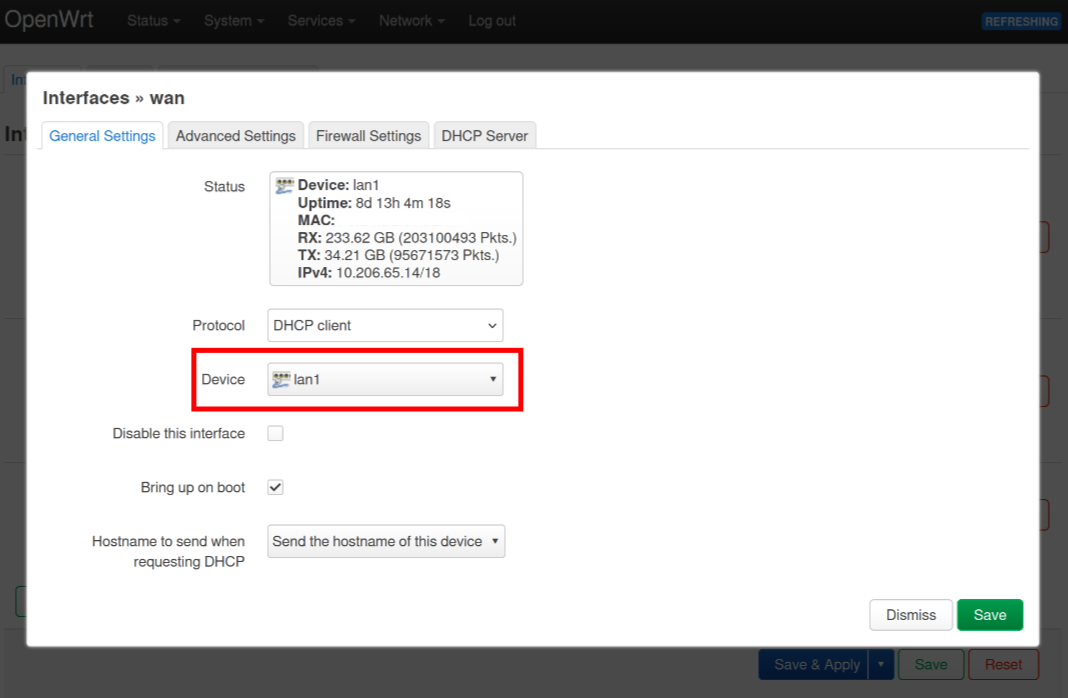OpenWRT Saves Another Junk
Table of Contents
What happened?⌗
A few weeks ago, a lightning struck the nearby pole and fried my Mikrotik hAP AC2 unit. It was just dead. It also fried my ThinkCentre M910q Ethernet port as well as the Ethernet port of ISP-issued DOCSIS modem. The rest of M910q was still operating normally after I connected up a display and a keyboard for inspecting it. The DOCSIS modem was still powered and getting connection from the Coaxial cable as indicated by the LED status.
My network topology was:
+----------+ +--------------+ +---------+
| | | | | |
| Internet | <--(Coaxial)--> | DOCSIS modem | <--(Ethernet)--> | hAP AC2 |
| | | | [WAN] | |
+----------+ +--------------+ +---------+
^
| [LAN]
+-----(Ethernet)-----+
| |
v v
+-------------+ +-------------+
| ThinkCentre | | Orange Pi 3 |
| M910q | | LTS |
+-------------+ +-------------+
Using backup connection and backup devices⌗
The internet went out so I used a LTE modem as backup internet and called the ISP company to come and replace the broken DOCSIS modem. The LTE modem was connected to GL.iNet Mango V2 I had lying around to serve as the home’s Wi-Fi. It was old device and had seen better days. The SoC had weakened due to long-term usage in the past. The Wi-Fi range was not great and the connections were choppy sometimes. However, it was the only thing I could come close.
The search of better internet experience⌗
The GL.iNet router used an OpenWRT as the base OS with GL.iNet modification and UI on top of it. While setting up the GL.iNet, I noticed that there was a setting to use the LAN port as WAN. I remembered of the TP-Link access point in which its WAN port fried due to the similar event. The TP-Link device was unusable due to missing link to the upstream. I thought of flashing OpenWRT firmware and re-purpose the LAN port as WAN. The access point was TP-Link Archer A6 (v3) and as far as I could remember I bought the device specifially because of the OpenWRT support.
The device was at my parent’s house so I waited for my brother to send the device over. The ISP guy came over and had the DOCSIS modem replaced but I still stuck with the crappy experience of the GL.iNet access point.
Reviving the junk⌗
After the TP-Link device arrived, I then flashed the TP-Link Archer A6 (v3) with OpenWRT firmware, booted it up, and accessed the Web UI (Network > Interfaces). A fresh OpenWRT installation came with the following configuration:
lan,wan, andwan6interfaces.laninterface provides DHCP server.- mapped to
br-landevice that bridgeslan1,lan2,lan3, andlan4ports.
- mapped to
wanandwan6interfaces are DHCP client for fetching IP for outgoing traffic.- mapped to
wanport directly.
- mapped to
The changes that I made were:
- Exclude
lan1port frombr-landevice. - Change the
wanandwan6interfaces to use thelan1port.


I applied the changes and voilà it could connect to the internet through the LAN 1 port. It now served as the main router for now and the internet experience had improved by a mile. The Wi-Fi had longer range and it was faster with its 5 GHz band. Long gone the choppy connections.
Closing thoughts⌗
It was a short journey but still I could learn things from it. Buying a hardware that has support from open-source community is money well-spent. This is the kind of experience will affect my purchase decision moving forward.
Now that I have a router, the next thing to fix is my ThinkCentre M910q that serves as a home lab and provides services in my LAN. However, it will be a post for another day.